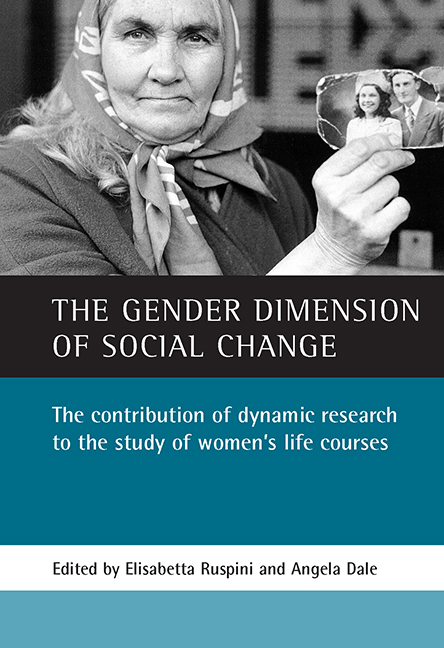 The Gender Dimension of Social Change
The Gender Dimension of Social Change Published online by Cambridge University Press: 20 January 2022
This appendix offers the reader a brief overview of the (longitudinal) datasets used in the book. For more detailed information the reader should consult the books and web pages which deal extensively with the characteristics of the datasets.
British Household Panel Survey (BHPS)
The BHPS was launched in 1991. It is being carried out by the Institute for Social and Economic Research (ISER), incorporating the ESRC Research Centre on Micro-Social Change at the University of Essex. The main objective of the survey is to further the understanding of social and economic change at the individual and household level in Britain, and to identify, model and forecast such changes, their causes and their consequences, in relation to a range of socio-economic variables.
It was designed as an annual survey of each adult member (aged 16 or older) of a nationally representative sample of more than 5,000 households, involving a total of approximately 10,000 individual interviews. The same individuals were re-interviewed in successive waves and, if they had split-off from their original households, all adult members of their new households were also interviewed. Children joined the sample once they reached the age of 16 (there is also a special survey of 11- to 15-year-old household members in waves 4 and 5). That is, the sample for the subsequent waves consisted of all adults in all households containing at least one member who was resident in a household interviewed at wave 1, regardless of whether that individual had been interviewed in wave 1. Thus, with a few exceptions, an attempt has been made to interview all those individuals in responding households who had refused to participate at wave 1, or for any reason had been unable to take part. In addition, a number of households where no contact had been made in wave 1 were approached for interview in wave 2 after confirmation that no household moves had taken place between waves.
The data collected covers a vast range of themes which are important for the social sciences: family composition; income; participation in the labour market; living conditions; education; health; use of Social Services; division of responsibilities within the family; the economic strategies and choices of the family nucleus; and, residential mobility.
To save this book to your Kindle, first ensure [email protected] is added to your Approved Personal Document E-mail List under your Personal Document Settings on the Manage Your Content and Devices page of your Amazon account. Then enter the ‘name’ part of your Kindle email address below. Find out more about saving to your Kindle.
Note you can select to save to either the @free.kindle.com or @kindle.com variations. ‘@free.kindle.com’ emails are free but can only be saved to your device when it is connected to wi-fi. ‘@kindle.com’ emails can be delivered even when you are not connected to wi-fi, but note that service fees apply.
Find out more about the Kindle Personal Document Service.
To save content items to your account, please confirm that you agree to abide by our usage policies. If this is the first time you use this feature, you will be asked to authorise Cambridge Core to connect with your account. Find out more about saving content to Dropbox.
To save content items to your account, please confirm that you agree to abide by our usage policies. If this is the first time you use this feature, you will be asked to authorise Cambridge Core to connect with your account. Find out more about saving content to Google Drive.